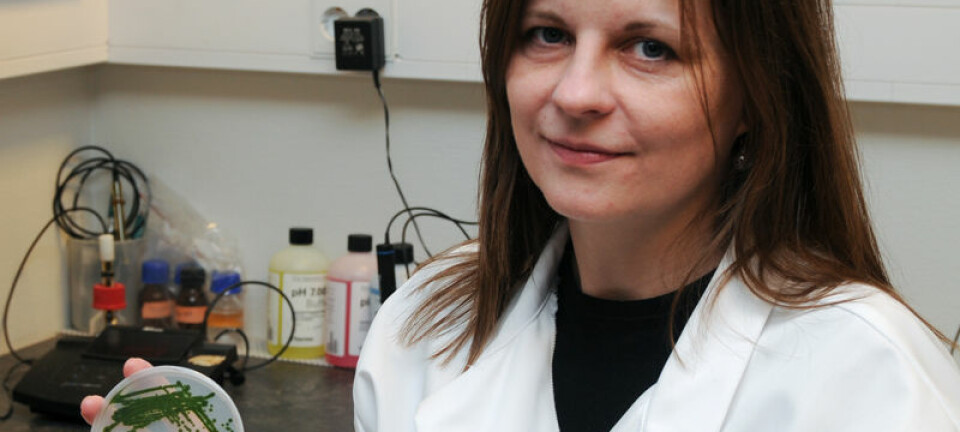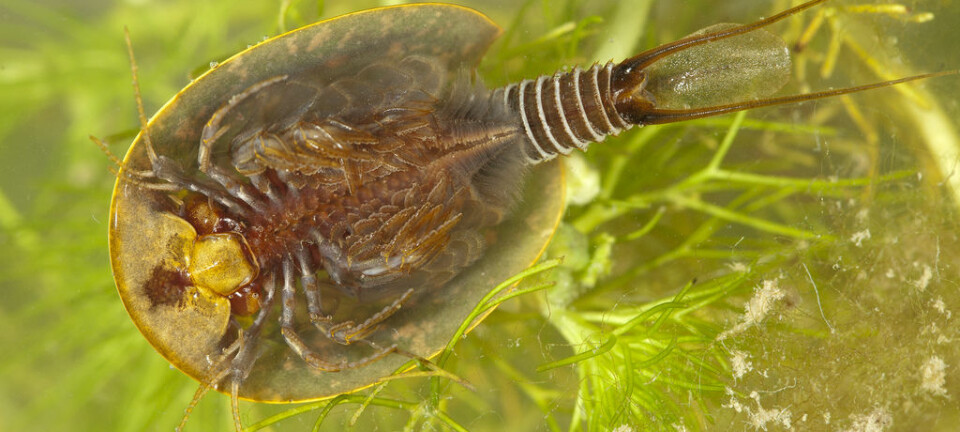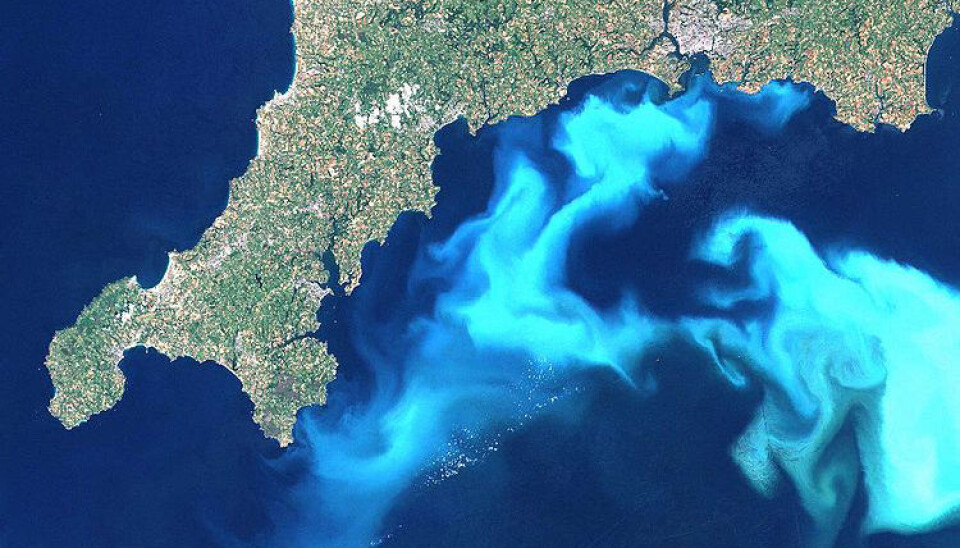
Big algae surprise in mountain lake
A common type of ocean algae has been found in a lake in the mountains of western Norway. Why are they there?
Denne artikkelen er over ti år gammel og kan inneholde utdatert informasjon.
Haptophytes are plant planktons that are individually too tiny for us to see with the naked eye, but their habitat is huge. These unicellular algae are dispersed through the global oceans. Still, they aren’t too hard to find.
Under the proper conditions haptophytes reproduce explosively and form enormous blooms, easily seen from space. These little cuties have existed for hundreds of millions of years.
The numbers of haptophytes that have lived and died is so infinitesimal that they get credit for some of the planet’s large geological structures.
The White Cliffs of Dover consist mainly of the calcium carbonate platelets from millions of generations of haptophytes. When the organisms die these coccolyths, as the platelets are called, sink to the bottom of the sea and eventually form sediments, which in turn can be thrust up as a part of mountains high above the sea.
A huge surprise
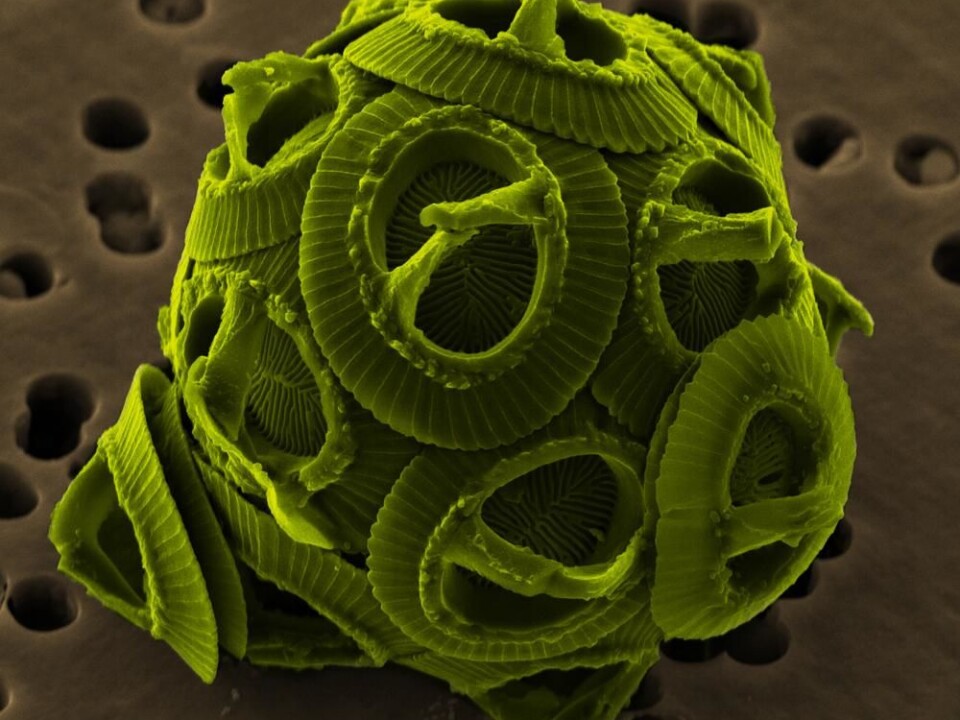
The characteristic haptophytes have been thoroughly studied through microscopes. Many biology students can nod in recognition at photos of these intriguing spheres, made up of round coccolith shields.
So no wonder that scientists from the Microbial Evolution Research Group (MERG) at the University of Oslo were surprised to see the DNA analysis of a sediment sample from Lake Finse on the Hardanger mountain plateau.
No observations of haptophytes have been made up there in the lake. But mud samples testify to their presence.
DNA tracks
Haptophytes’ genetic fingerprints were well established in the sediments from the mountain lake. Kamran Shalchian-Tabrizi who is the head of MERG, says there is every reason to assume they live in the lake.
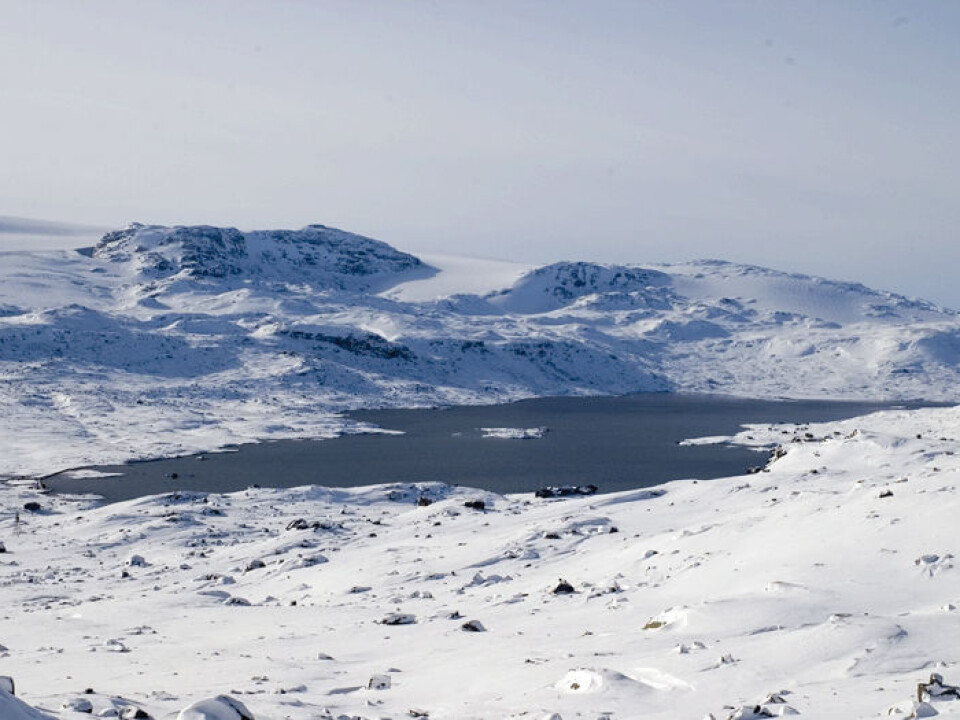
“We had no idea that haptophytes were present in the lake. We were primarily analyzing the diversity of aquatic life there. So we checked the DNA sequences we found in the samples against DNA from a wide spectrum of organisms we already know,” explains Shalchian-Tabrizi.
This led the scientists to the discovery of DNA sequences with characteristics that are unique to the haptophytes.
But what were they doing up on the mountain plateau?
MERG scientists, and lecturer Kjetil Reier-Røberg at Vestfold University College, who also participated in the project, had to concede that marine haptophytes could have hitchhiked with birds up into the lake. So they made comparable samples from another lake 177 kilometers away, in the eastern woods of Oslo.
“We found the same DNA tracks here too,” says Shalchian-Tabrizi.
Hard to observe
He thinks this means haptopohytes are likely to be rather common in all freshwater and you probably get a few in your drinking water. Scientists still don’t know what these lake haptophytes look like or why nobody has detected them in microscopes.
“Maybe they are so miniscule they are hard to observe. Or maybe they have an uncertain form or are so unrecognizable they’ve been interpreted as something else. The most probable answer, however, is that they live inside other aquatic organisms,” says Shalchian-Tabrizi.
Searches for unknown organisms in recent years have demonstrated that microorganisms are often lurking inside other tiny creatures, where they live either in parasitic or symbiotic relationships.
Difficulty in freshwater
Haptophytes in freshwater might have a variety of lifestyles. In the DNA material there were traces of diverse species belonging to many groups of the tiny algae.
The genetic relationships between these groups reveals something about the freshwater haptophytes’ history, according to Shalchian-Tabrizi.
“Haptophytes have probably invaded lakes in four or five different occurrences,” he says.
The first invasion appears to have happened very early in their history. Nevertheless, the discovery indicates that it has been hard for the tiny organisms to adapt and survive in lakes.
Four or five instances across a time span of several hundred million years do not make this particularly often.
----------------------------------------------------
Read this article in Norwegian at forskning.no
Translated by: Glenn Ostling







